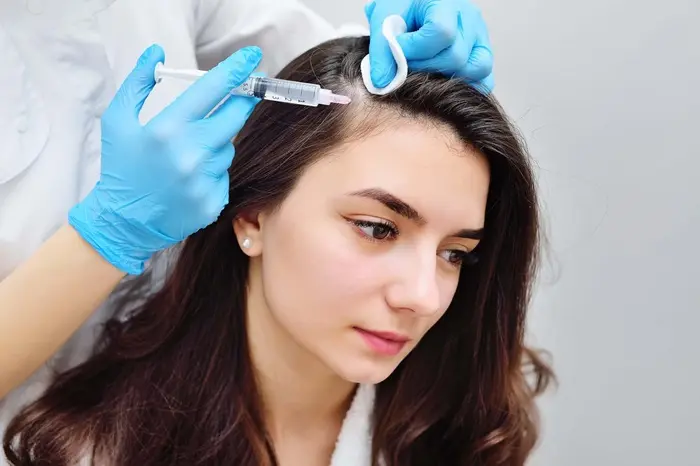Hair transplant surgery has become an increasingly popular solution for individuals experiencing hair loss. This cosmetic procedure involves transferring hair follicles from one part of the body, typically the back or sides of the scalp, to the balding or thinning areas. While the results can be highly effective, many prospective patients have questions about the duration of the procedure. This article aims to provide a comprehensive overview of the factors that influence the length of hair transplant surgery and what patients can expect during the process.
Understanding Hair Transplant Surgery
Types of Hair Transplant Techniques
There are two primary techniques for hair transplant surgery:
Follicular Unit Transplantation (FUT):
Also known as strip harvesting, this method involves removing a strip of scalp from the donor area. The strip is then dissected into individual follicular units, which are transplanted to the recipient area.
Follicular Unit Extraction (FUE):
This technique involves extracting individual follicular units directly from the donor area using a micro-punch tool. Each unit is then transplanted to the recipient area.
Factors Influencing Surgery Duration
Several factors can affect the time required for hair transplant surgery:
Extent of Hair Loss:
The more extensive the hair loss, the more grafts are needed, which increases the surgery time.
Type of Procedure:
FUT generally takes less time than FUE due to the method of harvesting hair follicles.
Number of Grafts:
The number of grafts needed directly impacts the duration of the surgery.
Surgeon’s Experience:
An experienced surgeon can perform the procedure more efficiently, potentially reducing the time required.
Patient’s Health and Hair Characteristics:
Factors like hair density, texture, and scalp elasticity can also influence the surgery duration.
See Also: When To Do PRB After Hair Transplant?
Pre-Surgery Preparation
Initial Consultation
Before the surgery, patients typically undergo an initial consultation with their surgeon. During this consultation, the surgeon assesses the patient’s hair loss, discusses their goals, and explains the different hair transplant techniques.
Pre-Surgery Instructions
Patients receive specific instructions to follow before the surgery, which may include:
Avoiding certain medications that can increase bleeding
Refraining from smoking and alcohol consumption
Washing the scalp thoroughly before the procedure
Planning the Procedure
The surgeon will create a detailed plan for the surgery, including the number of grafts required and the design of the hairline. This planning phase is crucial for achieving natural-looking results.
The Day of Surgery
Arrival and Preparation
On the day of the surgery, patients are advised to wear comfortable clothing and arrive at the clinic or hospital at the scheduled time. Upon arrival, the patient will undergo final preparations, including:
Signing consent forms
Taking pre-operative photographs for comparison with post-operative results
Administering local anesthesia to numb the donor and recipient areas
The Surgery Process
Donor Area Preparation
FUT Technique:
The surgeon removes a strip of scalp from the donor area, usually the back of the head.
The strip is then dissected into individual follicular units under a microscope.
FUE Technique:
The surgeon uses a micro-punch tool to extract individual follicular units from the donor area.
Graft Preparation
The harvested grafts are carefully prepared and stored in a solution to keep them viable until transplantation.
Recipient Area Preparation
The surgeon creates tiny incisions or recipient sites in the balding or thinning areas where the grafts will be placed. The design and density of these sites are crucial for achieving natural-looking results.
Graft Placement
The prepared grafts are meticulously placed into the recipient sites. This process requires precision and attention to detail to ensure proper alignment and natural hair growth patterns.
Post-Surgery Care
Immediate Post-Surgery Instructions
After the surgery, patients receive specific instructions for post-operative care, including:
Keeping the scalp clean and avoiding touching or scratching the grafts
Taking prescribed medications to reduce pain and prevent infection
Avoiding strenuous activities and direct sunlight exposure
Recovery Timeline
The initial recovery phase typically lasts a few days, during which patients may experience mild discomfort, swelling, and redness. Most patients can return to work and normal activities within a week, but full recovery and final results can take several months.
Conclusion
Summary
The duration of hair transplant surgery can vary based on several factors, including the extent of hair loss, the type of procedure, and the number of grafts needed. On average, FUT procedures can take 4 to 8 hours, while FUE procedures can take 8 to 12 hours. It’s essential for patients to have realistic expectations and follow their surgeon’s pre- and post-operative instructions to achieve the best possible results.
Final Thoughts
Hair transplant surgery is a significant investment of time and resources, but the results can be life-changing for individuals struggling with hair loss. By understanding the factors that influence the duration of the surgery and being well-prepared, patients can ensure a smoother and more successful experience.
Related topics:

